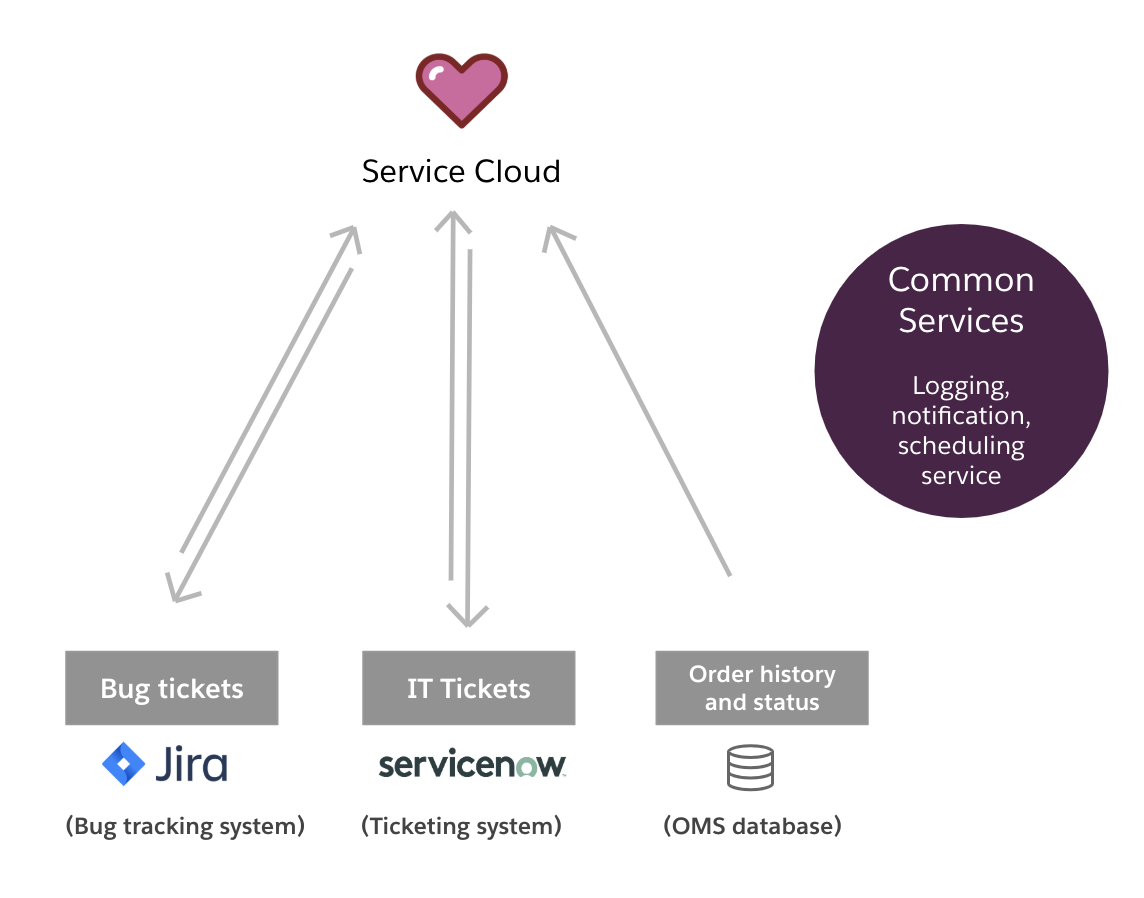The need for a connected service experience
The service landscape is continuously evolving. Today, 72% of customers expect service agents to have access to all of their information; yet, 70% of service agents can’t find the customer information they need to do their job on one screen. Customer service organizations must meet ever-rising customer standards for fast, personalized, and connected engagement that requires access to service anytime and anywhere. Agents not only need tools to help their customers, but also need access to data and information about the customer in a single view.

Why integration is the answer to providing superior service
For most companies, customer data is spread across a variety of legacy systems, causing service agents to spend more time searching for data than serving customers. This problem continues to grow in complexity as organizations now have on average more than 900 applications and it becomes increasingly difficult to have a single view of customers.
MuleSoft’s Anypoint Platform enables organizations to synchronize data and automate transactions between Salesforce Service Cloud, ERP, and other third-party systems, whether on-premises or in the cloud. Service Cloud helps deliver customer success because it offers a unified workspace with a complete view of the customer within one console.
Together, MuleSoft and Service Cloud enables agents with a single view of the customer, by making it easy to pull in previously siloed third-party data sources into one platform. Now reps can work faster, smarter, and engage with customers across all channels. The results are increased agent productivity, customer satisfaction, and faster response rates.
How MuleSoft and Salesforce Service Cloud are helping organizations transform

Our customers repeatedly tell us that they feel the pain of integration and recognize the power of APIs — but where should they start?
MuleSoft Accelerator for Salesforce Service Cloud helps you take that first step in your service transformation journey by jumpstarting your service projects three times faster. The solution includes out-of-the-box APIs, connectors, and integration templates that unlock customer and product data from external systems such as SAP, ServiceNow, and Jira. As part of the design process, we asked our customers what primary systems and information needed to be integrated into their service console. We found that bug tracking, ITSM issues, and order information were critical needs for agents, which served as our first use cases for the solution:
- Service Cloud and ServiceNow/Jira integration: While creating a Case within Service Cloud for a customer, service agents will route relevant issues within the case to ServiceNow, if it is an ITSM issue, and Jira, if it is a bug issue. Once the ServiceNow and Jira tickets are created, the agent can also see any updates made to that ticket — whether new comments are added or the status changed — all within Service Cloud.
- Service Cloud and OMS integration: Without having to toggle to a separate application, service agents can see real-time order history and order status information from an external order management system (OMS) within Service Cloud.
By unifying data across your systems into a single console, MuleSoft and Service Cloud eliminate swivel chair service and automate manual service processes, making agents 40% more productive.
Interested to find out more?
- Register for our upcoming webinar where you can see a live demo and hear from our design partner, Robert Ford, at Deluxe.
- MuleSoft Accelerator for Salesforce Service Cloud will be available in MuleSoft Exchange.
- Read more about the capabilities of Accelerators here.









